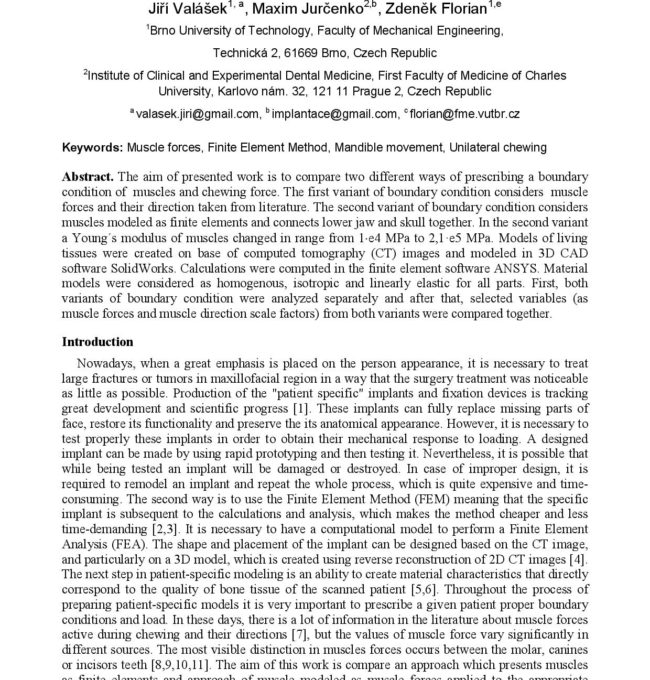

The comparison of two different approaches to modeling muscles and masticatory forces focuses on the differences between two types of boundary conditions. The first method uses data from the literature to model muscle forces and their directions. The second method approaches muscle modeling as finite elements that connect the lower jaw with the skull. Models of living tissues were created based on data from CT scans and subsequently modeled in 3D CAD software SolidWorks. The resulting calculations were performed in the finite element analysis software ANSYS.
Applied Mechanics and Materials, 2013, No.436, pp.255-264
Abstract:
https://www.scientific.net/AMM.436.255
Parking near the clinic
You can park near the clinic in mixed and residential areas.

Purple zone (Mixed)
The purple zone, marked with a discontinuous white line and a traffic sign with a purple stripe is meant for so called mixed parking. Owners of a valid parking permit may use the purple zone without limitations. Others may use it for a maximum of 24 hours and only after paying via the virtual parking clock web app or using the parking ticket machine.
Blue zone (Residents)
The blue zone, marked with a blue line (vertical and horizontal signs) is designated for residents. Visitors may use the blue zone for parking only after paying via the virtual parking clock web app (“Virtuální parkovací hodiny”), as there are no parking ticket machines installed in the blue zone. This way of use of the blue zone allows for maximum time of 3 hours.